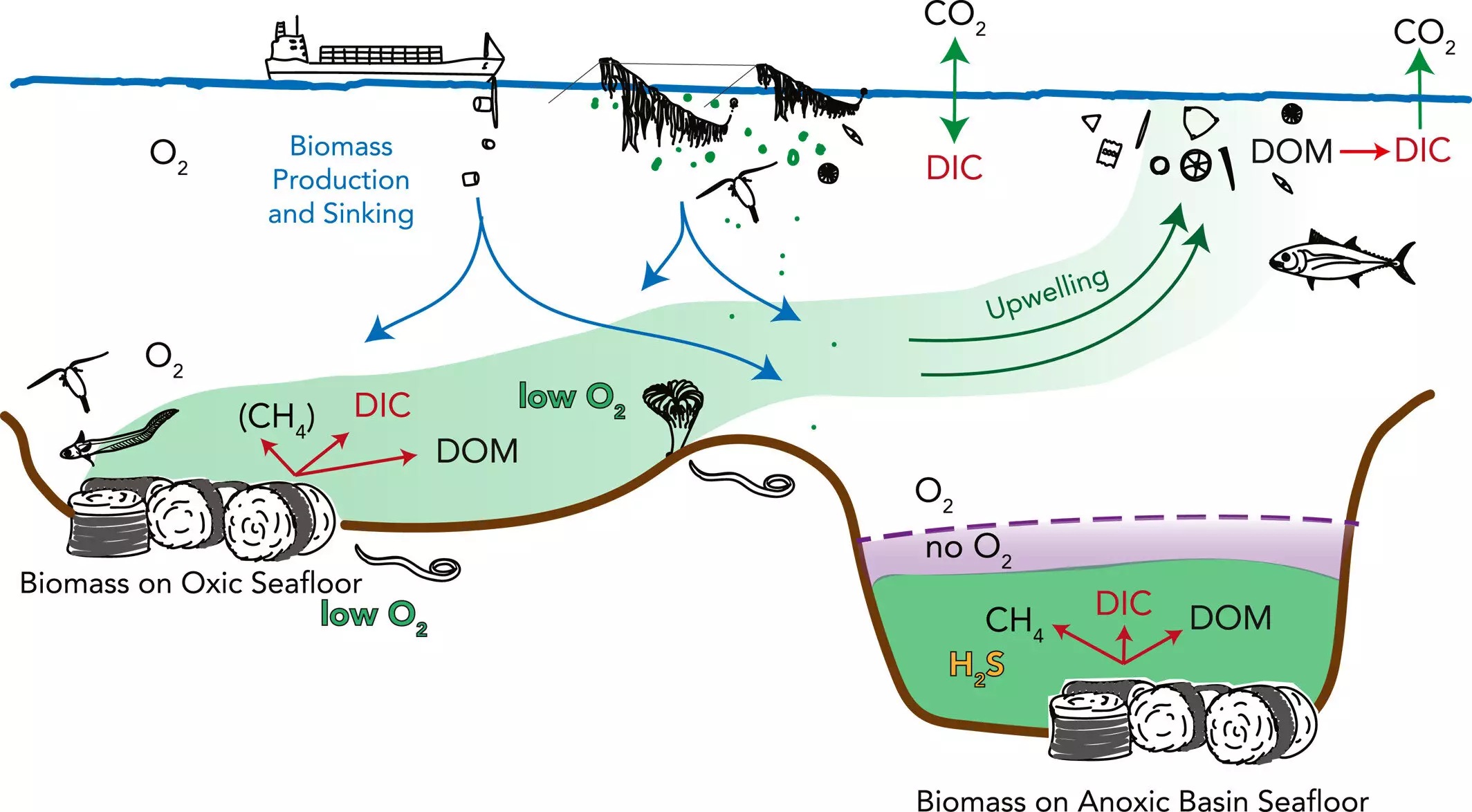The idea of utilizing anoxic marine basins for large-scale carbon sequestration in the deep ocean has gained significant attention in recent years. A study conducted by researchers at UC Santa Barbara sheds light on the viability of this method while emphasizing the importance of minimizing negative impacts on marine life. As the global community strives to combat climate change and reduce carbon levels in the atmosphere, exploring innovative strategies like sending plant biomass to oxygen-deprived zones on the seafloor presents a compelling option worth considering.
In the pursuit of meeting climate goals and limiting global warming to 1.5°C higher than preindustrial levels, experts agree that some form of net negative CO2 removal is essential. This necessitates exploring different methods of storing carbon to prevent its release into the atmosphere. One promising approach highlighted in the study involves sinking plant biomass to the seafloor, where it would be locked away for extended periods, unable to emit CO2 and methane as it decomposes. While the concept is not entirely new, it raises questions about its potential impacts on marine ecosystems and the efficacy of long-term carbon storage.
The introduction of significant amounts of plant material into anoxic marine basins poses several challenges that must be carefully considered. The interaction between the deposited biomass and the chemical and ecological dynamics of these environments remains uncertain. Concerns about the release of decomposition byproducts into sensitive habitats or the resurfacing of carbon to the water column add complexity to the carbon sequestration process. Addressing these unintended consequences is crucial to safeguarding fragile ocean ecosystems and achieving carbon storage objectives.
Among the various locations considered for carbon sequestration, anoxic marine basins stand out as promising candidates due to their unique characteristics. These basins are deep, isolated from oxygen-rich currents, and harbor microbial communities distinct from those in oxygenated environments. The absence of animal life in these zones, coupled with favorable conditions for preserving plant matter, makes them attractive for long-term carbon storage. The researchers focused on three distinct basins to assess their suitability for biomass storage: the Black Sea, the Cariaco Basin, and the Orca Basin.
The study delves into the specific features of each basin to determine which offers the most potential for large-scale carbon sequestration. While the Black Sea emerges as a top contender due to its depth, isolation, and expanding anoxic conditions, the Cariaco Basin and the Orca Basin present unique opportunities and challenges. Factors such as water turnover rates, salinity levels, and basin size play a critical role in evaluating the feasibility of depositing plant biomass in these locations. Ultimately, the researchers assert that the Black Sea basin holds the greatest capacity for making a significant impact on global climate through carbon storage.
In recent years, private investors have shown interest in funding projects related to deep-sea carbon sequestration, including the sinking of plant biomass. Organizations specializing in ocean and terrestrial plant biomass acquisition have spearheaded efforts to explore this innovative approach. Leveraging fast-growing seaweeds, agricultural waste, and forestry byproducts, these initiatives aim to assess the benefits and drawbacks of various strategies for carbon storage. The involvement of private investment signifies a growing recognition of the importance of exploring alternative solutions to address climate change.
The potential of anoxic marine basins for large-scale carbon sequestration presents a promising avenue for combating climate change. While uncertainties and challenges exist, the research conducted by UC Santa Barbara researchers underscores the importance of evaluating the environmental impact and efficiency of this approach. By leveraging the unique characteristics of anoxic basins and engaging in further exploration and experimentation, the global community can advance towards achieving carbon sequestration goals and mitigating the effects of carbon emissions on the environment.



Leave a Reply